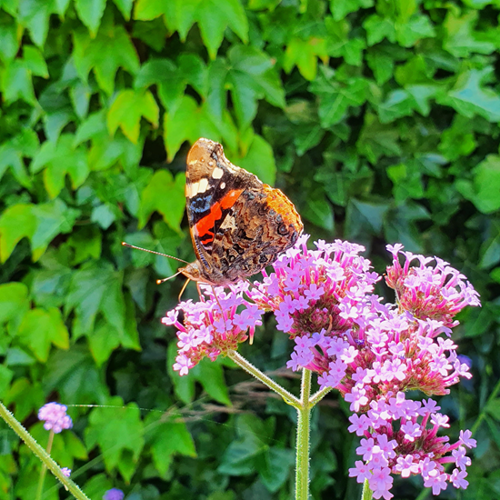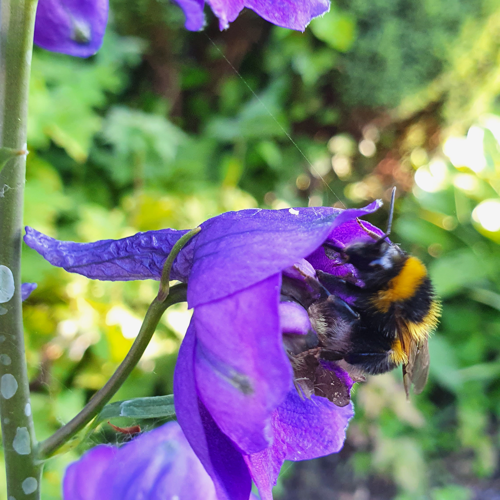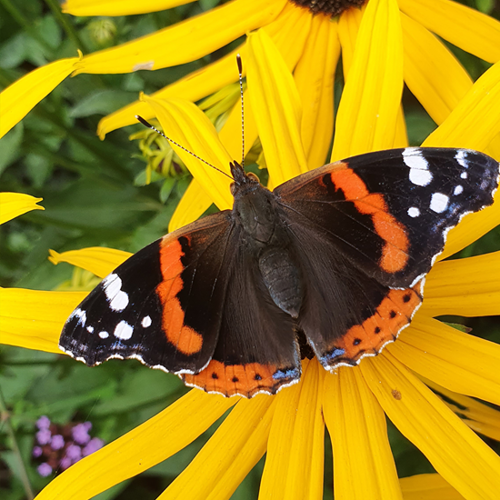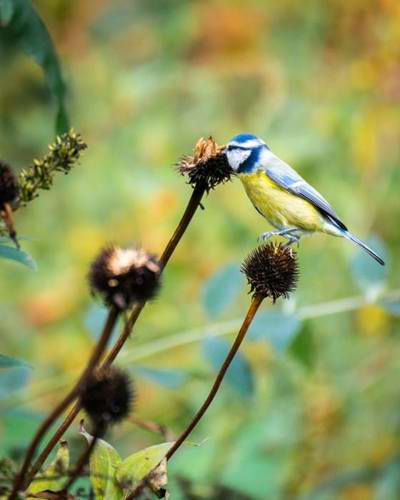
A biodiverse garden, balcony or terrace: every little helps
Biodiversity. You keep hearing more and more about it, and with good reason. Partly due to the changing climate, the subject is more relevant than ever. But what is it exactly? Simply put: when there are as many different types of plants, animals and organisms in the world as possible, nature is at its most balanced. Nature can grow and flourish at its best. And you can contribute too! Whether you have a huge garden or a small balcony, every little bit helps.
Choose what you like and think tastes nice
Floor Korte, known from Floors Moestuin, has made her garden her dream job. She writes blogs, books and travels all over the Netherlands to help people with their vegetable gardens. She knows better than anyone that biodiversity is extremely important. And it is actually very easy. Her tip: don't think about it too much. Just let grow, what you like and enjoy: flowers, plants, vegetables, fruit. The more, the better. Then all sorts of different animals will naturally come to it. Birds, butterflies, bees, hedgehogs, you name it! All animals work together to create a beautiful garden.

Check the roots of your plant
Gardener Casper Boot has also thrown himself into biodiversity and can now call himself an expert. He wrote the book 'je eigen paradijs' (your own paradise) and is completely persuaded that every little bit helps. Because if everyone does something, even if it is just a little, it adds up to a whole nature reserve. We are doing it together! His tip: before you buy anything, check where its roots are. Does this plant actually belong in the United Kingdom? The information is easy to find on the internet and then you know immediately whether it is interesting for the insects and animals that live in the United Kingdom. A Spanish flower, for example, might be beautiful, but unfortunately, it is of little use to the English bees.
Top five Bee and Butterfly Plants
- 1. Giant hyssops Height: 70 - 100 cm. Position: Sun worshipper. Not too wet soil. Flowering: June - September. Flower colour: violet blue. Insects: butterflies, bumblebees and bees.
- 2. Geranium Height: 20 - 40 cm. Position: Half shade - Sun. Not very demanding. Flowering: depending on the species, April - September. Flower colour: pink, purple, blue. Insects: bumblebees and bees.
- 3. Salvia Height: 30 - 60 cm. Position: half shade to sun. Not too wet soil. Flowering: May - July. Flower colour: pink/purple. Insects: bees and bumblebees.
- 4. Coneflowers Height: 40 - 100 cm. Position: Half shade, sun. Moderately nutrient poor to moderately nutrient rich soil. Flowering: July - September. Flower colour: purple/pink. Insects: butterflies and moths.
- 5. (Winter) heather Height: 25 - 50 cm. Position: half shade, sun. Acidic, humus rich soil. Flowering: June - November. Flower colour: red, pink and white. Insects: bumblebees, bees and butterflies.
Source: Je eigen Paradijs – Casper Boot

Let it go, let it grow
Both gardeners agree: let it go, let it grow! You might think that having a biodiverse garden is a lot of work, but it's not. Animals and insects definitely won't be happy if all the grass has been mowed, the weeds between the tiles have been removed, the pears have been picked up and the leaves have all been swept away. It is precisely by letting it all go that animals and insects can enjoy themselves. Before you know it, a hedgehog will be hibernating under the leaves in your garden...

Inspired by nature
At elho we also like to be inspired by nature when thinking up our products. Such as the large pots in which a summer lilac has all the room it needs to grow or a mix of all sorts of flowers in full bloom. Or take the rain barrel! Another way to give nature a helping hand. Plants and soil are happiest with pure natural rainwater straight from the watering can. And did you know that a rain barrel in the summer can easily hold hundreds of litres of water?
In short, every little bit helps. Would you like to help?
